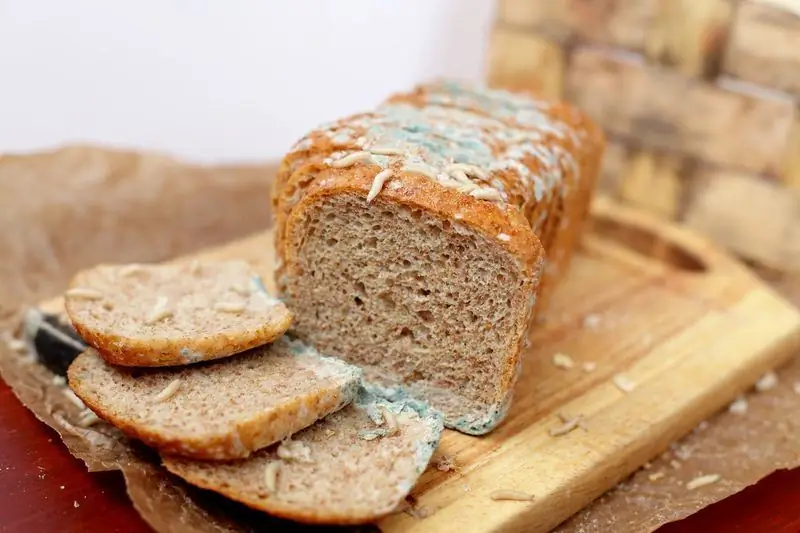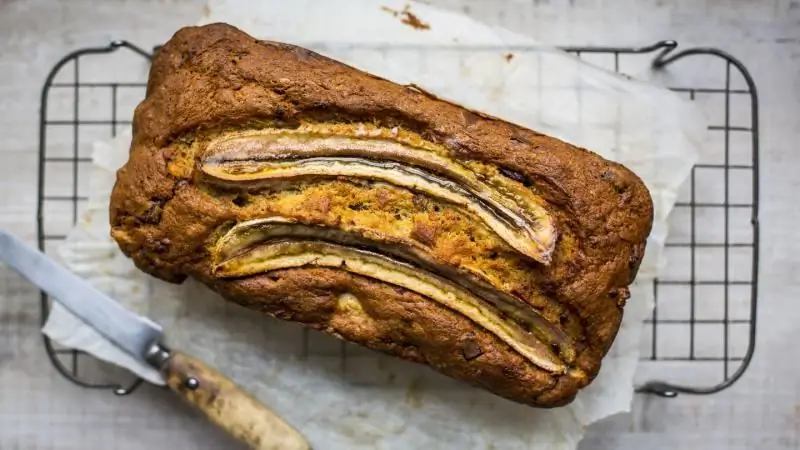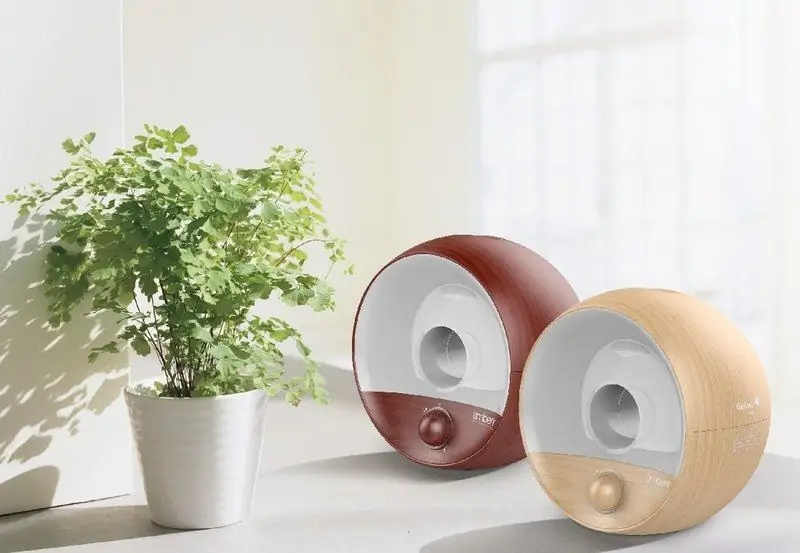
Table of contents:
- Author Bailey Albertson [email protected].
- Public 2023-12-17 12:53.
- Last modified 2025-01-23 12:41.
What to do if you ate moldy bread, and how dangerous it is

Even relatively fresh bread is not immune to mold. They didn't bake enough, didn't store them well, kneaded the dough with the remains of unsold baked goods infected with fungal spores - and here you are: the loaf in your bread bin “bloomed”. It is even more unpleasant if you find traces of mold after you have eaten a hefty piece of bread. How does this threaten your health and do you need to do something?
Why is moldy bread dangerous and what to do if you ate it
Not all people fully understand the danger of mold. Many claim that no one has died from penicillin yet, and calmly eat the contaminated product, cutting off the upper black crust. And they are making a big mistake!
Firstly, it is useless to remove moldy spots, spores of a microscopic fungus penetrate into the pulp of bread much deeper than visible black spots.
Secondly, penicillin is really obtained from the waste products of microorganisms, but it has a very distant relation to what is in your bread bin.

This mold has little in common with penicillin
However, a healthy adult who has once been treated to bread with a fluffy bloom will most likely have nothing to fear. Is that psychological discomfort at the thought of eaten fungus and nausea about it. But a child's body weakened by illness or vulnerable can suffer.
Mold is capable of:
- settle in the lungs, having entered them with inhalation, and begin to actively multiply in a humid, oxygen-filled environment;
- provoke the appearance of a rash and Quincke's edema, if a person is, in principle, prone to allergic reactions;
- cause poisoning with nausea, vomiting and diarrhea caused by mycotoxins, aflatoxins and other harmful waste products of the fungus.
If you feel unwell after your exotic snack:
- drink 1 liter of water with lemon juice and lie down;
- take an absorbent - for example, activated carbon (1 tablet per 10 kg of weight) or Polysorb;
- make a weak solution of potassium permanganate, drink and induce vomiting;
- if you have a tendency to allergic reactions, it will not hurt to take an antihistamine (for example, Suprastin or Zodak);
- if symptoms of poisoning persist, go to the hospital.
Video: why you can't eat bread that has begun to bloom
What conclusion follows from all this? When you find that you have eaten moldy bread, don't panic: in most cases, your body won't even notice it. But do not take mold lightly - once a year and a stick shoots, and poisoning by the ubiquitous fungus is a very real thing. Watch closely what goes into your stomach.
Recommended:
Banana Bread: Recipes For Bread Maker And Oven

How to make sweet banana bread. Step by step recipes for the oven and bread maker. Video. What to file with
Why Do You Need A Humidifier In An Apartment, Including For A Child, Komarovsky's Opinion

Air humidifier in the apartment: benefits and harms. Do I need a humidifier if a child lives in the house
Why You Can't Eat Fresh Bread, Including Hot

Why you can't eat fresh bread. The harm of warm bread. Under what conditions is hot baking especially dangerous?
How To Properly Wash Makeup Brushes, How Can You Wash Cosmetic Sponges (including For Foundation), How Often You Need To Do It

How often and correctly you should wash your makeup brushes and sponges. Home and professional cleaning tools for cosmetic tools. Instructions. Video
Recipe For Bread In A Bread Maker With Step By Step Instructions

Bread in a bread maker - fast, convenient, always fresh. Simple, proven bread maker recipe
